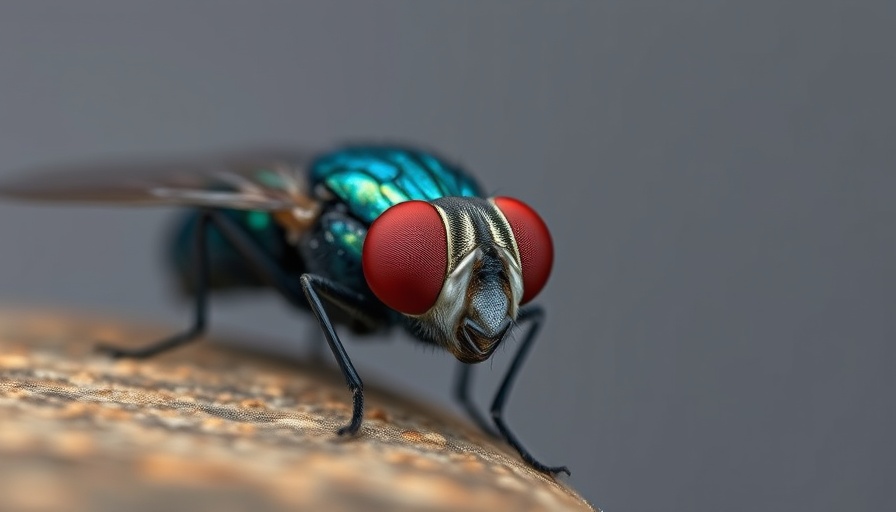
Understanding the New World Screwworm Infection
In a worrying healthcare update, a traveler from the United States has been diagnosed with the New World screwworm parasite after returning from El Salvador. This case marks the first occurrence in the U.S. linked to a country currently experiencing an outbreak of this rare infection. The Centers for Disease Control and Prevention (CDC) confirmed the diagnosis on August 4, but details concerning the patient's health remain limited.
What is the New World Screwworm?
The New World screwworm is a type of fly known for its destructive larval stage. The female fly lays its eggs in open wounds or orifices, leading to severe health issues primarily in livestock, although human cases are extremely rare. According to U.S. health officials, this parasite doesn't transmit between individuals, posing a very low public health threat. Nevertheless, it has raised alarms due to its significant impact on cattle populations, especially as infestations spread northward from Central America and Mexico.
Historical Context: The Rise and Fall of Screwworm Infestations
Historically, the New World screwworm posed serious threats to the American cattle industry. In the 1970s, aggressive control measures and eradication efforts successfully minimized its presence in the U.S. Since then, the parasite has become a lesser-known concern, relegating itself primarily to livestock in certain regions. Yet recent outbreaks remind us of the ongoing threat it poses to both animals and humans, particularly in regions where it hasn't been completely eradicated.
Why This Case Matters: Impact on Local Communities
This diagnosis may seem far away to many community members in Davenport, Polk County, and Central Florida. However, it serves as a reminder of the interconnectedness between global health issues and local public health. As residents engage in more global travel, understanding the risks associated with such exotic parasites becomes crucial. This case could encourage homeowners and renters to remain informed about health issues related to travel and livestock.
Prevention and Awareness: What You Can Do
The CDC and U.S. Department of Agriculture (USDA) are working collaboratively to monitor and prevent further spread of this parasite. This situation underscores the importance of awareness. If you have plans to travel to high-risk areas or live near agricultural zones, it's wise to stay informed about potential health threats and preventative measures. Community awareness can significantly enhance disease prevention efforts.
Broader Implications: Other Infectious Threats
This incident highlights a broader context of public health challenges related to infectious diseases. Similar to screwworm, other parasites and diseases, such as Zika and Chikungunya, also arrive in the U.S. through travel. Each of these cases emphasizes the need for vigilance and informed health practices among travelers and local communities to mitigate risks effectively.
Final Thoughts: The Personal Connection
While the New World screwworm may not be a household name, its impact on American livestock and potential human health implications can resonate deeply with individuals who value a robust public health framework. The case reminds us to stay vigilant about health issues, better educate ourselves on travel-related risks, and support public health initiatives aimed at preventing such infections.
As we navigate at-risk health situations, we must consider not just personal practices but also how we contribute to our community’s health. Share this information with family and friends, stay informed about public health initiatives, and take action to protect yourself and your community from health threats, new and old.
 Add Row
Add Row  Add
Add 




Write A Comment